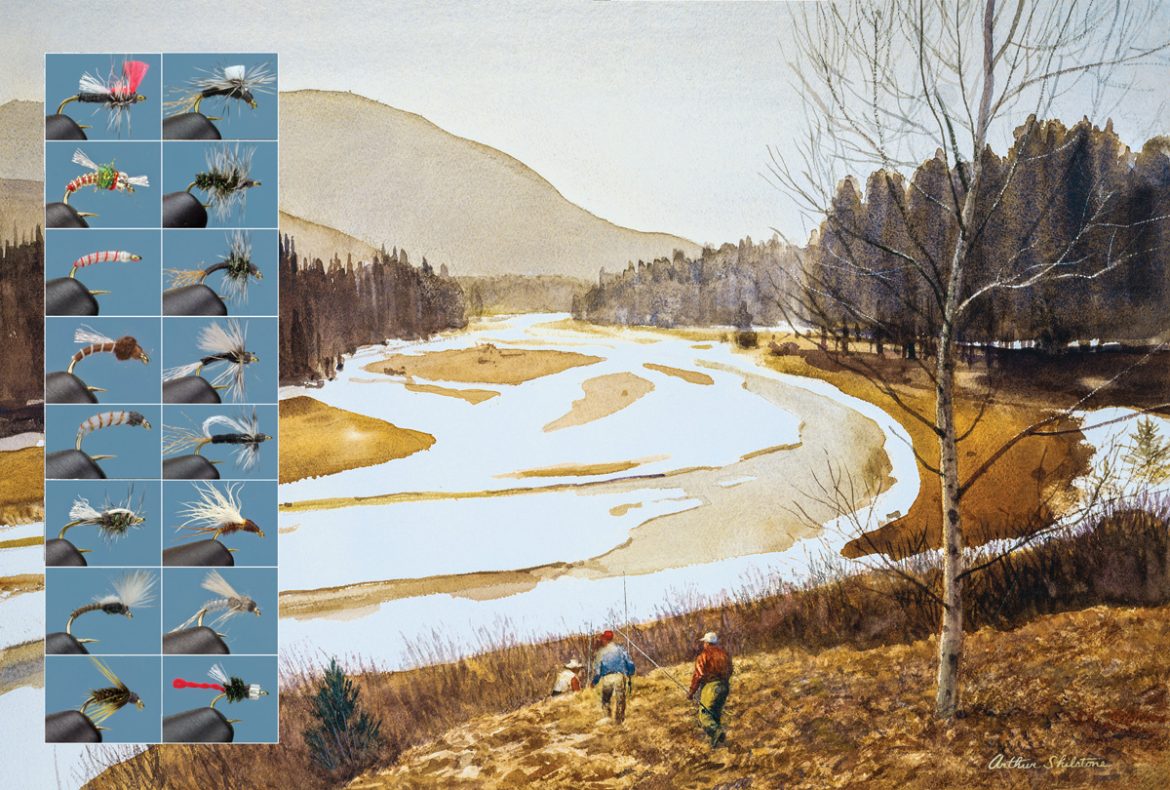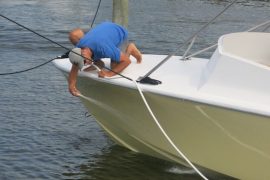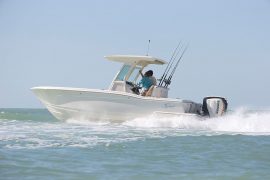
You bet it’s cold outside, but the fishing is still hot! A collection of flies and angling methods for catching Rocky Mountain trout throughout the winter.
[by Al Ritt]I LET THE SLEEK CUTTHROAT-RAINBOW HYBRID TROUT SLIP THROUGH MY FINGERS back into its aquatic refuge. I was grateful to experience the rise and subsequent battle with that fish, and the op – portunity to view the vivid colors of the several other trout I caught that day under the bright Colorado sun and a brilliant blue sky. But truthfully, I was primarily grateful for the fish’s quick recovery and the warmth my wool gloves provided my freshly dipped hands. It was cold!
Growing up in Michigan, I spent my winters ice fishing and rabbit hunting; it never occurred to me that I would spend a January day, with the high temperature near 10 degrees, casting minute dry flies to eagerly rising trout. I also never considered that fish could not leave the stream for warmer surroundings, and even though their metabolisms slow in the winter, they still must eat to survive. Even though the air temperature might be obscenely cold, if the water has not turned to ice, the fish must be warmer than I am.

Hook: Standard dry fly hook, sizes 22 to 18.
Thread: Black Benecchi 12/0.
Body: Black boar bristles.
Wing: White Fluoro Fibre.
Strike indicator: Fluorescent orange polypropylene yarn.
Hackle: Grizzly clipped into a V on the bottom of the collar.

Hook: Curved scud hook, sizes 22 to 18.
Thread: White 8/0 (70 denier).
Body: White floss.
Rib: Red 8/0 (70 denier) or 6/0 (40 denier) thread, twisted tightly.

ARF Midge Pupa
Hook: Curved scud hook, sizes 22 to 18.
Thread: Red Benecchi 12/0.
Gills: White Fluoro Fibre.
Bead: Clear silver-lined bead.
Abdomen: Tying thread.
Rib:silver wire inside clear micro tubing.
Wing: White Fluoro Fibre.
Thorax: Peacock sparkle dubbing.

Hook: Curved scud hook, sizes 22 to 18.
Thread: Brown 8/0 (70 denier).
Body: Tying thread.
Rib: White 8/0 (70 denier) or 6/0 (140 denier) tying thread, twisted tightly.
Wing: White Fluoro Fibre.
Thorax: Brown Super Fine Dubbing.
When I first moved to Colorado, I fished as I had while growing up, which meant ice fishing in the winter. Unlike Michigan, Colorado has no closed season, and many of our streams remain ice free—at least in some sections—throughout the winter. And, due to western water laws, intensive storage, and the manipulation of flows, many Colorado tailwaters have more consistent water temperatures throughout the year; they stay cooler in the summer and warmer in the winter. It wasn’t long before I started fly fishing during the winter, and I had some of my best days using both nymphs and dry flies.
At first, winter fishing was a way to avoid the crowds and visit some productive waters that were ridiculously popular in the summer. It didn’t take long to discover that the fishing could be just as productive—and sometimes even more productive—than during the summer. There was plenty of bug activity, and the fish were often on the lookout for scuds, Mysis shrimps, eggs, and annelids, to name a few of the more plentiful winter food sources. Midges quickly became my favorite; they are plentiful throughout the year, and they are one of the most available sources of food in the winter. On some days, the midge hatches are quite heavy.

Fitsimon’s Midge Adult
Hook: Standard dry fly hook, sizes 22 to 18.
Thread: Black Benecchi 12/0.
Abdomen: Tying thread.
Wing: White Fluoro Fibre.
Hackle: Grizzly, trimmed flat on the bottom.
Thorax: Peacock herl.

Hook: Standard dry fly hook, sizes 22 to 18.
Thread: Black Benecchi 12/0.
Body: Peacock herl.
Hackle: Grizzly

Hook: Curved scud hook, sizes 22 to 18.
Thread: Brown Benecchi 12/0.
Trailing shuck: Two or three pheasant tail fibers.
Abdomen: The butt ends of the pheasant tail fibers.
Wing: Natural winter snowshoe rabbit fur.
Thorax/head: Tying thread.

Hook: Curved scud hook, sizes 22 to 18.
Thread: Black Benecchi 12/0.
Trailing shuck: Mallard flank fibers.
Abdomen: Gray turkey biot.
Thorax: Gray Super Fine Dubbing.
Legs: Mallard flank fibers.
Wing: Cul de canard.
First Outing
My first winter fishing expedition was to a…





